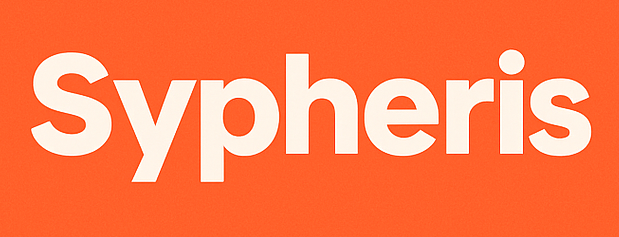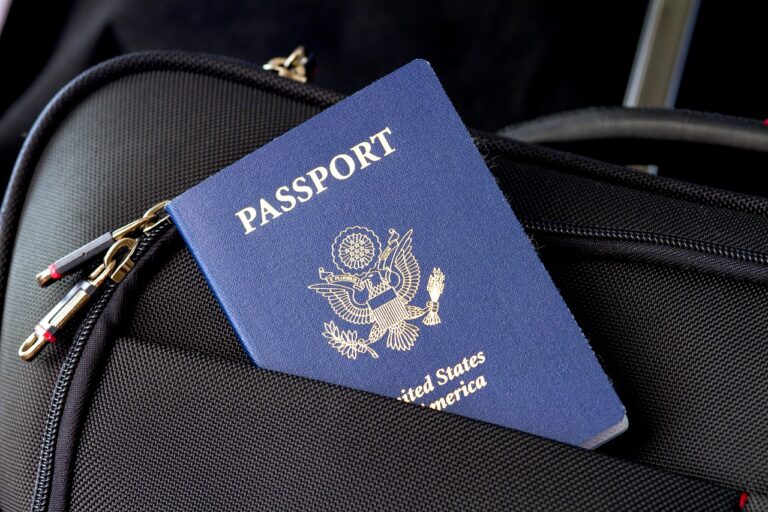Navigating the Housing Landscape as an International Student
Embarking on your academic journey in the United States brings excitement and challenges, with finding suitable accommodation being one of the most significant hurdles. The quest for affordable housing for international students has become increasingly complex in 2025, as rental costs have risen by 10.1% per bed across the country. With over 1.1 million international students enrolled in US post-secondary programs during the 2023-2024 academic year, the competition for quality, budget-friendly accommodation is fiercer than ever.
I know firsthand how overwhelming this search can feel. When I first arrived in Boston as an international student, the housing market seemed like an impenetrable maze of high costs and confusing options. The good news? There are more pathways to finding suitable student housing US 2025 than you might think.
What makes the current housing landscape particularly challenging is that only 21.5% of undergraduates at the top 175 universities can secure on-campus housing. This shortage pushes many international students into an unfamiliar off-campus market, often without the local knowledge or credit history that American students take for granted.
However, the market is adapting to meet these needs. There’s a notable shift in student housing US 2025 trends, with providers prioritizing competitive pricing over luxury amenities. Many housing options now offer features specifically designed for international students, including multilingual support, culturally diverse food options, single-gender accommodations, and prayer rooms.
This guide will walk you through the most viable affordable housing options for international students, breaking down costs, locations, and strategic approaches to secure the best possible living situation while studying in the US. Whether you’re preparing for your first semester or looking to change your current living arrangement, these insights will help you navigate the complex US housing market with confidence.
Exploring Your Options: Comprehensive Guide to Student Housing
On-Campus Housing: The Convenient First Choice
On-campus housing remains one of the most straightforward options for international student housing, offering convenience and an immersive campus experience. University dormitories typically cost between $800-$1,200 monthly, with utilities and basic amenities included in this price.
The primary advantage of on-campus housing is its proximity to classes, libraries, and campus resources. For first-year international students, dorms provide an invaluable opportunity to build connections and adapt to American university culture. Many institutions offer specialized international student housing sections with additional support services and programming.
However, availability is the biggest challenge. With only about one-fifth of students at top universities able to secure on-campus housing, competition is intense. Additionally, many dorms close during holiday breaks, which can be problematic for international students unable to return home.
“On-campus housing was my lifeline during my first year,” shares Maria from Brazil, studying at University of Illinois. “The convenience of being close to classes and having all utilities included made my transition to American life much smoother.”
To increase your chances of securing on-campus housing:
- Apply as early as possible, ideally immediately after accepting your admission offer
- Consider less popular dorm options that might have higher availability
- Check if your university reserves specific housing allocations for international students
Off-Campus Apartments: Independence with Responsibility
For those seeking more independence, off-campus apartments represent a popular alternative. The cost of cheap student housing in the US varies dramatically by location, with monthly rents ranging from $600 in smaller Midwest towns to over $3,500 in New York City.
When considering apartments for international students, location significantly impacts both cost and quality of life. According to recent data, average rental rates per bed in 2025 vary by region:
| Region | Average Rate Per Bed | YoY Change |
|---|---|---|
| West | $1,104 | +2.8% |
| Southwest | $945 | +4.3% |
| Midwest | $970 | +9.0% |
| Northeast | $1,184 | +2.1% |
| Southeast | $959 | +6.0% |
Off-campus living requires more responsibility, including setting up utilities, internet service, and potentially purchasing furniture. However, it also offers greater privacy, fewer restrictions, and the opportunity to immerse yourself in American community life.
Many international students wonder: can international students apply for affordable housing through government programs? While most federal housing assistance programs require citizenship or specific immigration statuses, some universities partner with local housing authorities to provide subsidized options for international students. Check with your university’s international student office for specific programs available to you.
Shared Housing: Maximizing Affordability
Shared housing represents one of the most economical options for international student housing. By splitting costs with roommates, monthly expenses can drop to $300-$600 per person, making this among the most affordable student housing arrangements available.
Platforms like Roomster and SpareRoom specialize in connecting students with shared housing opportunities. Many universities also maintain off-campus housing boards where students can find roommate matches.
“Sharing an apartment with three other international students cut my housing costs in half compared to living alone,” explains Ahmed from Egypt, studying at Arizona State University. “Beyond the financial benefits, having roommates from different countries created a supportive mini-community that made adjusting to life in America much easier.”
When exploring shared housing options:
- Clearly establish expectations about shared spaces, quiet hours, guests, and cleaning responsibilities
- Consider compatibility factors like study habits and lifestyle preferences
- Get all roommate agreements in writing, even with friends
- Verify that your lease allows for multiple occupants
Homestays: Cultural Immersion and Support
Homestays offer international students the opportunity to live with an American family, providing cultural immersion alongside practical support. This option typically costs between $700-$1,200 monthly, usually including meals and utilities.
Organizations like American Homestay Network and USAHomestay specialize in matching international students with host families. Many universities also maintain their own homestay programs with vetted local families.
The benefits extend beyond economics. Homestays can accelerate English language acquisition, provide insight into American customs, and offer a supportive family environment. Host families often help with practical matters like transportation, local recommendations, and navigating cultural differences.
“My homestay experience gave me so much more than affordable housing,” shares Yuki from Japan, studying at University of Washington. “My host family helped me improve my English, understand American customs, and even assisted with my job search. They became my American family.”
Co-living Spaces: Modern Community Living
A growing trend in student housing solutions is co-living spaces, which offer private bedrooms with shared common areas in purpose-built communities. Companies like Common and Starcity have expanded their presence in university towns, offering flexible leases that appeal to international students.
Monthly costs typically range from $800-$1,500, with most utilities and amenities included. These communities often feature cleaning services, furnished units, and community events designed to foster connections.
Co-living spaces bridge the gap between dormitories and independent apartments, offering the community aspects of dorm life with greater privacy and fewer restrictions. Many co-living providers have simplified application processes that don’t require extensive US credit history, making them accessible to international students.
University Partnerships and Affiliated Housing
Many universities have developed partnerships with private housing providers to expand affordable student housing options. These affiliated properties often offer simplified application processes for international students, sometimes with reduced security deposit requirements.
These partnerships typically result in housing that’s 10-15% below market rate while maintaining proximity to campus and student-friendly amenities. Check with your university’s housing office to identify affiliated properties that might not be advertised on general housing platforms.
Strategic Approaches: Finding and Securing Affordable Housing
Planning Timeline and Application Strategy
The journey to securing affordable housing for international students should begin well before your arrival in the US. Here’s a strategic timeline to follow:
6-8 Months Before Arrival:
- Research housing options at your university and surrounding areas
- Understand typical costs and application requirements
- Join university housing groups on social media
3-5 Months Before Arrival:
- Apply for on-campus housing if available
- Begin contacting off-campus properties or potential roommates
- Prepare necessary documentation (admission letter, financial statements, passport copy)
1-2 Months Before Arrival:
- Finalize housing arrangements and sign agreements
- Make deposit payments through secure methods
- Arrange temporary accommodation if permanent housing isn’t immediately available
Understanding how much to qualify for affordable housing depends on several factors. Most landlords require monthly income of 2-3 times the rent amount. As an international student with limited or no US income, you’ll likely need a co-signer or will have to prepay several months’ rent. Some properties catering to international students offer alternative qualification methods, such as larger security deposits or proof of sufficient funds.
Documentation Preparation
Preparing the right documentation can significantly smooth your housing search. Essential documents include:
- Passport and visa documentation
- University admission letter
- Proof of financial resources (bank statements, scholarship awards)
- Reference letters from previous landlords or university officials
- Contact information for emergency contacts both in the US and your home country
For international student housing NYC and other competitive markets, having your documentation organized and readily available can make the difference between securing housing or losing it to better-prepared applicants.
Leveraging University Resources
Your university’s international student office is an invaluable resource in your housing search. These offices typically offer:
- Housing workshops and orientation sessions
- Databases of university-approved housing options
- Roommate matching services
- Guidance on understanding leases and tenant rights
- Information about neighborhoods and transportation options
Many universities also offer student placement services specifically designed to help international students navigate housing challenges. These services can provide personalized assistance based on your budget, preferences, and needs.
Financial Strategies for Housing Costs
Managing housing costs effectively requires strategic planning. Consider these approaches:
- Timing your search: In many markets, signing leases during off-peak seasons (typically winter months) can result in lower rates
- Negotiating lease terms: Some landlords will reduce monthly rates for longer lease commitments or upfront payments
- Exploring rent subsidies: Some universities offer housing stipends or subsidies for international students facing financial hardship
- Considering location trade-offs: Housing costs typically decrease with distance from campus, though transportation costs may increase
For managing ongoing expenses, consider applying for a student credit card with no foreign transaction fees to simplify rent payments and build US credit history.
Practical Tips for Affordable Living as an International Student
Finding and Screening Potential Roommates
Finding compatible roommates can significantly enhance your housing experience while reducing costs. When searching for roommates:
- Use university-sponsored roommate matching platforms for added security
- Conduct video interviews before committing to living arrangements
- Discuss key compatibility factors: study habits, cleanliness expectations, guest policies
- Consider cultural backgrounds and potential lifestyle differences
- Establish clear communication channels and conflict resolution approaches
“Finding the right roommate is as important as finding the right apartment,” advises Carlos from Colombia, studying at University of Texas. “I used my university’s international student Facebook group to connect with potential roommates from similar cultural backgrounds, which made the transition much smoother.”
Understanding Lease Terms and Tenant Rights
Navigating rental agreements can be particularly challenging for international students unfamiliar with US housing practices. Key considerations include:
- Lease duration and renewal options
- Policies regarding subletting during academic breaks
- Maintenance responsibilities and request procedures
- Security deposit terms and return conditions
- Early termination clauses and associated penalties
Many universities offer lease review services through their legal aid departments. Taking advantage of these services before signing any agreement can prevent costly misunderstandings.
Budgeting for Total Housing Costs
When evaluating affordable housing for international students, consider all associated costs beyond just rent:
| Expense Category | Monthly Cost Range | Cost-Saving Strategies |
|---|---|---|
| Rent | $500-$1,200 | Consider shared housing, distance from campus |
| Utilities | $100-$200 | Look for inclusive packages, monitor usage |
| Internet | $40-$80 | Share costs with roommates, student discounts |
| Transportation | $40-$120 | Prioritize housing near public transit |
| Furniture | $50-$100 | Explore second-hand options, university sales |
| Renter’s Insurance | $15-$30 | Bundle with other insurance, student discounts |
“The listed rent is just the starting point,” shares Priya from India, studying at University of Michigan. “I was surprised by how quickly utilities, internet, and transportation added up. Creating a comprehensive budget that included all these factors helped me find truly affordable housing.”
Navigating Housing in Different Regions
Housing costs and options vary dramatically across different US regions. Here’s a snapshot of what to expect in major student destinations:
Northeast (Boston, New York, Philadelphia):
- Highest overall costs ($1,100-$3,500 monthly)
- Older housing stock with potential maintenance issues
- Excellent public transportation reducing the need for cars
- Competitive market requiring early applications
West Coast (Los Angeles, San Francisco, Seattle):
- High costs with significant variation by neighborhood ($800-$2,800)
- Newer housing stock with modern amenities
- Variable public transportation quality
- Emphasis on co-living and innovative housing models
Midwest (Chicago, Minneapolis, Ann Arbor):
- Moderate costs with good value ($600-$1,500)
- Mix of housing ages and styles
- Seasonal considerations for utilities and transportation
- More space for the money compared to coastal cities
South (Atlanta, Austin, Miami):
- Generally lower costs with exceptions in trendy areas ($600-$1,800)
- Newer housing stock in many areas
- Car dependency in many locations
- Growing international student communities
Frequently Asked Questions About Student Housing
How much is student housing in the US?
Student housing costs vary significantly based on location, housing type, and amenities. On-campus dormitories typically range from $800-$1,200 monthly with utilities included. Off-campus options range from $300-$600 per person in shared housing to $900-$1,500 for private apartments, plus utilities. Major metropolitan areas like New York, Boston, and San Francisco command premium prices, while Midwest and Southern regions offer more affordable options.
The average on-campus housing cost nationally is approximately $1,050 per month, while the national average for off-campus shared housing is approximately $650 per person. These figures represent 2025 rates, which have increased approximately 10.1% from previous years.
Where to find cheap housing for students?
The most reliable sources for finding cheap student housing in the US include:
- University housing offices and off-campus housing directories
- Dedicated student housing platforms like Places4Students and University Living
- University Facebook groups and international student associations
- Local property management companies specializing in student housing
- Community bulletin boards near campus
Many universities also maintain emergency housing funds or short-term affordable options for students facing financial hardship. Contact your university’s international student services office for information about these resources.
Can international students apply for affordable housing programs?
Yes, international students can apply for certain types of affordable housing, though options vary by location and visa status. While most federal housing assistance programs require citizenship or permanent residency, many universities offer their own subsidized housing programs accessible to international students.
Additionally, some cities and states have affordable housing initiatives that don’t have citizenship requirements. For example, New York City’s affordable housing lottery is open to international students with valid visas. Check with your university’s international office and local housing authorities for programs available in your area.
What documentation do international students need for housing applications?
International students typically need to provide:
- Passport and student visa documentation
- I-20 or DS-2019 form
- University enrollment verification
- Proof of financial resources (bank statements, scholarship awards)
- International credit report (if available)
- Contact information for emergency contacts
- Reference letters from university officials or previous landlords
Many landlords will require a US-based guarantor or additional security deposit in lieu of US credit history. Some universities offer guarantor services for international students, while others partner with third-party companies that provide guarantor services for a fee.
How can international students find housing before arriving in the US?
Finding housing remotely requires a strategic approach:
- Utilize virtual tours and video calls to view potential properties
- Work through university-affiliated housing services that can verify legitimacy
- Never send money without confirming the property and landlord are legitimate
- Consider university housing or short-term accommodations for your first semester
- Connect with current students from your country for recommendations and potential roommate matches
“I secured my apartment through my university’s international housing office before arriving,” shares Wei from China, studying at University of California. “They offered virtual tours and handled the paperwork, which gave me peace of mind that I wasn’t being scammed.”
Finding Your Perfect Housing Match
Navigating affordable housing for international students requires research, planning, and flexibility. The housing landscape continues to evolve, with more options emerging to meet the specific needs of international students. From traditional dormitories to innovative co-living spaces, the range of housing solutions has never been more diverse.
Remember that your housing choice impacts not just your budget, but your entire academic experience. The right living situation provides a foundation for success, while a poor match can create unnecessary stress during an already challenging transition.
As you begin your housing search, leverage all available resources—university housing offices, international student services, current students, and online platforms. Start early, prepare thoroughly, and approach the process with both optimism and practical caution.
Explore More Student Finance Guides:
- Best Credit Cards for Students in 2025
- Understanding Your Student Loan
- Budgeting Tips for College Students
- Best Investment Broker for investment
- Best Private Student Loans




